Papers by Cordula Vesper
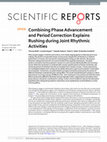
Scientific Reports, 2019
When people engage in rhythmic joint actions, from simple clapping games to elaborate joint music... more When people engage in rhythmic joint actions, from simple clapping games to elaborate joint music making, they tend to increase their tempo unconsciously. Despite the rich literature on rhythmic performance in humans, the mechanisms underlying joint rushing are still unknown. We propose that joint rushing arises from the concurrent activity of two separate mechanisms. the phase advance mechanism was first proposed in research on synchronously flashing fireflies and chorusing insects. When this mechanism is combined with a human-specific period correction mechanism, the shortened periods of individual intervals are translated into a tempo increase. In three experiments, we investigated whether joint rushing can be reliably observed in a joint synchronization-continuation drumming task. Furthermore, we asked whether perceptual similarities produced by the actions of different individuals modulate the joint rushing effect. The results showed that joint rushing is a robust phenomenon occurring in groups of different sizes. Joint rushing was more pronounced when the action effects produced by different individuals were perceptually similar, supporting the assumption that a phase advance mechanism contributed to rushing. Further control conditions ruled out the alternative hypothesis that rushing during rhythmic interactions can be explained by social facilitation or action mirroring effects. When humans engage in synchronized, rhythmic joint activities, they tend to increase their pace unconsciously. Even though this phenomenon appears to be ubiquitous and well known among musicians, dancers and their audiences 1-5 , it has hardly been addressed in research on timing mechanisms in humans (except for two recent studies 6,7). Thus, despite the rich literature on the cognitive and neural bases of rhythmic performance in humans 8,9 , the psychological mechanisms underlying joint rushing are still unknown. We argue that if joint rushing indeed emerges from human interaction in contrast to purely individual processes , then predominant models of inter-subjective sensorimotor synchronization are incomplete. Specifically, they do not consider how sounds produced during synchronous, rhythmic joint actions are integrated to result in specific patterns of tempo drift. Thus, the systematic study of joint rushing has potential to lead to more adequate models of inter-personal coordination by identifying missing components. In this article, we first present evidence that joint rushing is a robust phenomenon that emerges in interpersonal sensorimotor synchronization. As an explanation for joint rushing, we then propose a combination of two mechanisms, a period correction mechanism, which is a standard component of models of human sensorimotor synchronization 10 , with a phase advance mechanism, a mechanism that has been proposed to regulate rhythmic synchronicity in some firefly species and chorusing insects 11 .
In joint action, multiple people coordinate their actions to perform a task together. This often ... more In joint action, multiple people coordinate their actions to perform a task together. This often requires precise temporal and spatial coordination. How do co-actors achieve this? How do they coordinate their actions toward a shared task goal? Here, we provide an overview of the mental representations involved in joint action, discuss how co-actors share sensorimotor information and what general mechanisms support coordination with others. By deliberately extending the review to aspects such as the cultural context in which a joint action takes place, we pay tribute to the complex and variable nature of this social phenomenon.
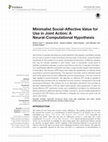
Joint Action is typically described as social interaction that requires coordination among two or... more Joint Action is typically described as social interaction that requires coordination among two or more co-actors in order to achieve a common goal. In this article, we put forward a hypothesis for the existence of a neural-computational mechanism of affective valuation that may be critically exploited in Joint Action. Such a mechanism would serve to facilitate coordination between co-actors permitting a reduction of required information. Our hypothesized affective mechanism provides a value function based implementation of Associative Two-Process (ATP) theory that entails the classification of external stimuli according to outcome expectancies. This approach has been used to describe animal and human action that concerns differential outcome expectancies. Until now it has not been applied to social interaction. We describe our Affective ATP model as applied to social learning consistent with an " extended common currency " perspective in the social neuroscience literature. We contrast this to an alternative mechanism that provides an example implementation of the so-called social-specific value perspective. In brief, our Social-Affective ATP mechanism builds upon established formalisms for reinforcement learning (temporal difference learning models) nuanced to accommodate expectations (consistent with ATP theory) and extended to integrate non-social and social cues for use in Joint Action.
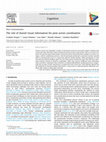
Previous research has identified a number of coordination processes that enable people to perform... more Previous research has identified a number of coordination processes that enable people to perform joint actions. But what determines which coordination processes joint action partners rely on in a given situ-ation? The present study tested whether varying the shared visual information available to co-actors can trigger a shift in coordination processes. Pairs of participants performed a movement task that required them to synchronously arrive at a target from separate starting locations. When participants in a pair received only auditory feedback about the time their partner reached the target they held their movement duration constant to facilitate coordination. When they received additional visual information about each other's movements they switched to a fundamentally different coordination process, exaggerating the curvature of their movements to communicate their arrival time. These findings indicate that the availability of shared perceptual information is a major factor in determining how individuals coordinate their actions to obtain joint outcomes.

Http Dx Doi Org 10 1162 Jocn_A_00388, Mar 14, 2013
We investigated whether people monitor the outcomes of their own and their partners’ individual a... more We investigated whether people monitor the outcomes of their own and their partners’ individual actions as well as the outcome of their combined actions when performing joint actions together. Pairs of pianists memorized both parts of a piano duet. Each pianist then performed one part while their partner performed the other; EEG was recorded from both. Auditory outcomes (pitches) associated with keystrokes produced by the pianists were occasionally altered in a way that either did or did not affect the joint auditory outcome (i.e., the harmony of a chord produced by the two pianists’ combined pitches). Altered auditory outcomes elicited a feedback-related negativity whether they occurred in the pianist’s own part or the partner’s part, and whether they affected individual or joint action outcomes. Altered auditory outcomes also elicited a P300 whose amplitude was larger when the alteration affected the joint outcome compared to individual outcomes, and when the alteration affected the pianist’s own part compared to the partner’s part. Thus, musicians engaged in joint actions monitor their own and their partner’s actions as well as their combined action outcomes, while at the same time maintaining a distinction between their own and others’ actions and between individual and joint outcomes.

The Quarterly Journal of Experimental Psychology, 2015
People performing joint actions coordinate their individual actions with each other to achieve a ... more People performing joint actions coordinate their individual actions with each other to achieve a shared goal. The current study investigated the mental representations that are formed when people learn a new skill as part of a joint action. In a musical transfer-of-learning paradigm, piano novices first learned to perform simple melodies in the joint action context of coordinating with an accompanist to produce musical duets. Participants then performed their previously learned actions with two types of auditory feedback: while hearing either their individual action goal (the melody) or the shared action goal (the duet). As predicted, participants made more performance errors in the individual goal condition than in the shared goal condition. Further experimental manipulations indicated that this difference was not due to different coordination requirements in the two conditions or perceptual dissimilarities between learning and test. Together, these findings indicate that people form representations of shared goals in contexts that promote minimal representations, such as when learning a new action together with another person.
Advances in Cognitive Neurodynamics ICCN 2007, 2008
We present a scenario for examining mechanisms of goal-oriented movement coordination in humans. ... more We present a scenario for examining mechanisms of goal-oriented movement coordination in humans. Our aim is to determine behavioral rules and constraints that shape movement execution. Therefore, trajectories of hand and finger movements are recorded while participants perform a simple construction task. We measure different parameters of reaching and grasping and compare performance in a single-person versus a two-person condition.
2008 ECSIS Symposium on Learning and Adaptive Behaviors for Robotic Systems (LAB-RS), 2008
The present study examines how humans adapt their movements when interacting with another person.... more The present study examines how humans adapt their movements when interacting with another person. Different parameters of pick-and-place movements of the same person are compared in situations where the person works alone (intrapersonal coordination) and when the person is working with a partner (interpersonal coordination). Results show an overall increase in movement speed during the interpersonal condition and a reduced
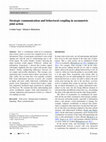
Experimental brain research, 2014
How is coordination achieved in asymmetric joint actions where co-actors have unequal access to t... more How is coordination achieved in asymmetric joint actions where co-actors have unequal access to task information? Pairs of participants performed a non-verbal tapping task with the goal of synchronizing taps to different targets. We tested whether 'Leaders' knowing the target locations would support 'Followers' without this information. Experiment 1 showed that Leaders tapped with higher amplitude that also scaled with specific target distance, thereby emphasizing differences between correct targets and possible alternatives. This strategic communication only occurred when Leaders' movements were fully visible, but not when they were partially occluded. Full visual information between co-actors also resulted in higher and more stable behavioral coordination than partial vision. Experiment 2 showed that Leaders' amplitude adaptation facilitated target prediction by independent Observers. We conclude that fully understanding joint action coordination requires b...
When two or more people perform actions together such as shaking hands, playing ensemble music or... more When two or more people perform actions together such as shaking hands, playing ensemble music or carrying an object together, they often naturally adjust the spatial and temporal parameters of their movements to facilitate smooth task performance. This paper reviews recent findings from experiments with human participants to demonstrate ways in which individuals strategically modulate their own action performance to support a task partner in predicting their actions and thereby facilitate coordination. Based on this evidence, it is discussed how strategic action modulation (“action signaling”) might be a useful approach also for robotic systems to assist human users, thereby reducing cognitive load and flexibly supporting the acquisition of new skills.
How do people coordinate actions with others? We tested the hypothesis that pairs of participants... more How do people coordinate actions with others? We tested the hypothesis that pairs of participants strategically reduce the variability of their action performance to achieve synchronicity in the absence of visual feedback about each other's actions. Consistent with this prediction, participants moved faster and less variably in a condition where they could not see their task partner's movements compared to a condition in which visual information was available. The accuracy of the resulting coordination was the same in both conditions. These findings are interpreted as evidence for general strategic adaptation in the service of real-time action coordination when only minimal perceptual information is available.
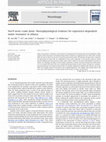
NeuroImage, 2008
Lately, neuroscience is showing a great interest in examining the functional and neural mechanism... more Lately, neuroscience is showing a great interest in examining the functional and neural mechanisms which support action observation and understanding. Recent studies have suggested that our motor skills crucially affect the way in which we perceive the actions generated by others, by showing stronger motor resonance for observation of actions that are established in one's motor repertoire. In the present study we extend previous findings that were based on expert motor skills in adults to the natural development of actions in infants. To investigate the effect of natural motor experience on motor resonance during action observation, 14-to 16-month-old infants' EEG was recorded during observation of action videos. Stronger mu-and betadesynchronizations were found for observation of crawling compared to walking videos and the size of the effect was strongly related to the infant's own crawling experience. This suggests that already early in life one's own action experience is closely related to how actions of others are perceived.
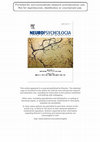
Neuropsychologia, 2014
How do people imagine performing actions together? The present study investigated motor imagery o... more How do people imagine performing actions together? The present study investigated motor imagery of joint actions that requires integrating one's own and another's part of an action. In two experiments, individual participants imagined jumping alone or jointly next to an imagined partner. The joint condition required coordinating one's own imagined actions with an imagined partner's actions to synchronize landing times. We investigated whether the timing of participants' own imagined jumps would reflect the difference in jump distance to their imagined partner's jumps. The results showed that participants' jump imagery was indeed modulated to achieve coordination with an imagined task partner, confirming prior findings from a performance task. Moreover, when manipulating both target distance and target size, the same violation of Fitts' law reported for individual jumping was present in imagery of joint jumping. These findings link research on motor imagery and joint action, demonstrating that individuals are able to integrate simulations of different parts of a joint action.
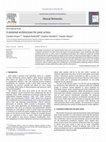
Neural Networks, 2010
What kinds of processes and representations make joint action possible? In this paper, we suggest... more What kinds of processes and representations make joint action possible? In this paper, we suggest a minimal architecture for joint action that focuses on representations, action monitoring and action prediction processes, as well as ways of simplifying coordination. The architecture spells out minimal requirements for an individual agent to engage in a joint action. We discuss existing evidence in support of the architecture as well as open questions that remain to be empirically addressed. In addition, we suggest possible interfaces between the minimal architecture and other approaches to joint action. The minimal architecture has implications for theorising about the emergence of joint action, for human-machine interaction, and for understanding how coordination can be facilitated by exploiting relations between multiple actions and between actions and the environment.
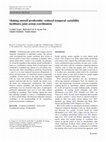
Experimental Brain Research, 2011
Performing joint actions often requires precise temporal coordination of individual actions. The ... more Performing joint actions often requires precise temporal coordination of individual actions. The present study investigated how people coordinate their actions at discrete points in time when continuous or rhythmic information about others' actions is not available. In particular, we tested the hypothesis that making oneself predictable is used as a coordination strategy. Pairs of participants were instructed to coordinate key presses in a two-choice reaction time task, either responding in synchrony (Experiments 1 and 2) or in close temporal succession (Experiment 3). Across all experiments, we found that coactors reduced the variability of their actions in the joint context compared with the same task performed individually. Correlation analyses indicated that the less variable the actions were, the better was interpersonal coordination. The relation between reduced variability and improved coordination performance was not observed when pairs of participants performed independent tasks next to each other without intending to coordinate. These Wndings support the claim that reducing variability is used as a coordination strategy to achieve predictability. Identifying coordination strategies contributes to the understanding of the mechanisms involved in real-time coordination.
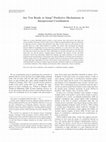
When two or more individuals intend to achieve a joint outcome, they often need to time their own... more When two or more individuals intend to achieve a joint outcome, they often need to time their own actions carefully with respect to those of their coactors. Online perceptual feedback supports coordination by allowing coactors to entrain with and predict each other's actions. However, joint actions are still possible when no or little online feedback is available. The current study investigated the interplay between higher-level planning processes and motor simulation in a joint action task where online feedback was not available. Pairs of participants performed forward jumps (hops) next to each other with the instruction to land at the same time. They could neither see nor hear each other, but were informed about their own and the partner's jumping distance beforehand. The analysis of basic movement parameters showed that participants adjusted the temporal and spatial properties of the movement preparation and execution phase of their jumps to the specific difference in distance between themselves and their partner. However, this adaptation was made exclusively by the person with the shorter distance to jump, indicating a distribution of coactors' efforts based on task characteristics. A comparison with an individual bipedal coordination condition suggests that joint coordination might rely on similar principles as interlimb coordination. These findings are interpreted within a framework of motor simulation.
Lecture Notes in Computer Science, 2007
The present paper describes a scenario for examining mechanisms of movement coordination in human... more The present paper describes a scenario for examining mechanisms of movement coordination in humans and robots. It is assumed that coordination can best be achieved when behavioral rules that shape movement execution in humans are also considered for human-robot interaction. Investigating and describing human-human interaction in terms of goal-oriented movement coordination is considered an important and necessary step for designing
The Quarterly Journal of Experimental Psychology, 2009
Miscellaneous by Cordula Vesper

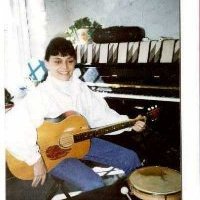






Uploads
Papers by Cordula Vesper
Miscellaneous by Cordula Vesper